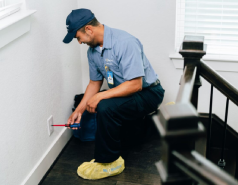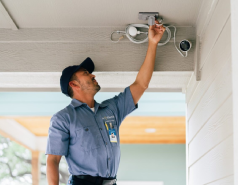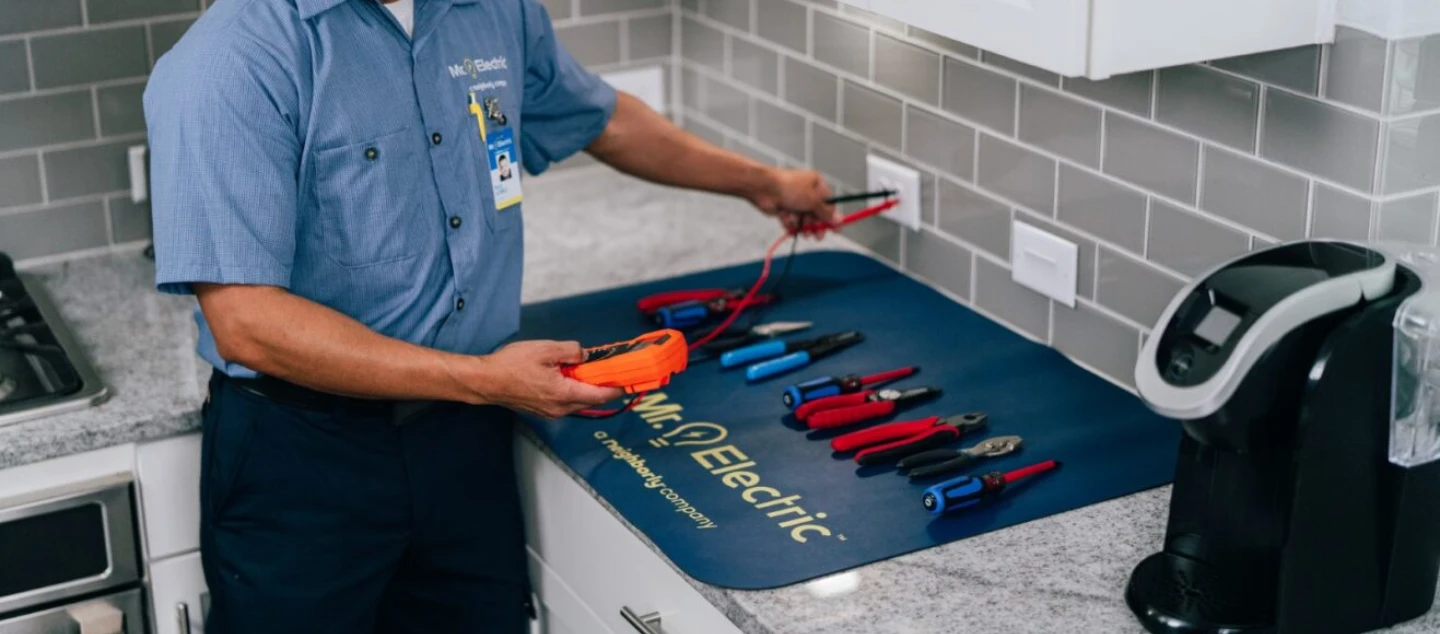Mr. Electric of Lansing completes every project with our customer’s safety and satisfaction as our top priority. This emphasis on exceptional service covers home wiring updates in Lansing and East Lansing, MI households with electrical issues like outdated wiring. Adequate home wiring is crucial for reasons beyond safety. Wiring installations also enhance a house’s electrical functionality while ensuring it runs more reliably, letting it support your currently increasing residential power needs without worrying about overloads and potential fires. A technician rarely inspects residential after they install it, so updating might be necessary without you realizing it. Home electrical wiring updates are especially important in residential structures built over 40 years ago. We can reduce risks like electric shocks, tripped breakers, and residential fires with timely and thorough wiring updates.

How Do I Know When to Update My Home’s Wiring?
You may notice one or more of various possible indications you need to update the electrical wiring in your home. Mr. Electric of Lansing has served countless homeowners by upgrading their older homes’ electrical wiring using our quick, efficient electrical solutions, carefully hones through years of industry experience and training. We also have in-depth expertise in the most current electrical code updates and always make absolutely certain our wiring jobs are compliant. We’ve described the following examples of situations requiring electrical wiring updates in your home:
Your House Wiring Is Old
Rewiring a residential electrical system is a substantial and complex process. The good news is electrical professionals like Mr. Electric of Lansing don't always need to perform a complete wiring replacement in an older home. However, we will usually need to remove and replace some wiring. For example, homes built in the 1960s and 1970s might have aluminum wiring, a well-known safety hazard. Pre-1930s homes can feature hazardous knob and tube wiring, and homes from the 1940s and 1950s can have non-metallic wiring. We can carefully replace the frayed wires and loose connections you’ll find in botched DIY projects or wear and tear from years of regular use.
You Have Ungrounded, Two-Pronged Outlets
Mr. Electric of Lansing has witnessed various outdated electrical system indicators. One clear sign you need to update your home’s electrical system is having ungrounded, two-pronged outlets instead of the modern, grounded, three-prong ones. These outlets are significantly hazardous and endanger your electronics and your family. A two-pronged outlet’s lack of proper grounding gives electrical excesses nowhere to travel but into an electronic device plugged into it or a person making contact. Even a surge protector might not provide adequate protection against electrical excess for you and your devices. Our technicians can minimize your potential shock risks quickly and easily by installing three-pronged outlets with grounded wires.
Your House Doesn’t Have GFCIs
You can spot GFCI outlets by their receptacles’ “Test” and ”Reset” buttons. GFCIs safeguard your loved ones and electronic devices against shock in high-moisture areas around your home. The latest electrical code requirements stipulate GFCIs must be in areas like laundry rooms, utility rooms, bathrooms, kitchens, garages, spa or pool areas, and unfinished basements or crawlspaces. Your home generally needs GFCIs in all electrified areas in outside spaces around it as well. You could suffer an electrical shock if these inexpensive and easy-to-install devices are not installed in these household spaces.
You Don’t Have AFCIs
AFCIs are essential to ensure your home’s electrical use is safe and reliable. This industry technology prevents potential fires by performing like a circuit breaker. The device disconnects any time a potentially dangerous arc occurs in an outlet. The latest electrical code mandates using AFCIs in bedrooms in all 50 states. Some states actually stipulate homeowners must have AFCIs in all their home circuits.
Your Appliance Outlets Are Inadequate
Not all outlets in your home are the same. For instance, the outlets we use to power appliances like washers, dryers, and ovens need to safely run higher amounts of electricity to ensure these appliances perform at their best. Heavy-duty home appliances like these did not always require special plugs. However, today’s heavy-duty appliances require a 240-volt outlet for each one you want to connect. Three-pronged plug wiring can be found in older electrical systems, but typically, the latest 240-volt plugs feature four prongs. This arrangement improves safety because of its ground wire addition.
Your Home’s Electrical Panel Is Inadequate
Are you aware of the number of amps you need to power your home’s appliances, devices, lighting, and other electronics? 60-amp breaker wiring may have been adequate to power households a couple of decades ago. However, contemporary homes typically require 100 to 200 amps to provide sufficient power to all appliances and electronics a household uses simultaneously. These electronics include air conditioners, refrigerators, mobile devices, and flat-screen televisions. Upgrading your breaker box wiring is the best method to support your home’s increasing energy demands safely and reliably.
Residential & Commercial Services
-

Electrical Safety
Learn more Electrical SafetyElevate your electrical safety with our range of services, from inspections to surge protection
-

Repair
Learn more RepairRepairs including lighting and electrical, should be performed by a professional electrician
-

Installations
Learn more InstallationsTrust our professionals for all your installation needs including panel upgrades, EVSE, and more
-

Lighting
Learn more LightingFrom ballast & bulb replacement to commercial, bathroom & kitchen lighting, we’ve got you covered

Join Our Team

Your Source for Local Home Service Experts
Neighborly brands repair, maintain, and enhance properties — to make life easier and more enjoyable for homeowners. Our consistency and quality work are the basis for everything we do, and are what make us a leader in the home services space, as we constantly strive to "be so remarkable, we become a beloved household name."






